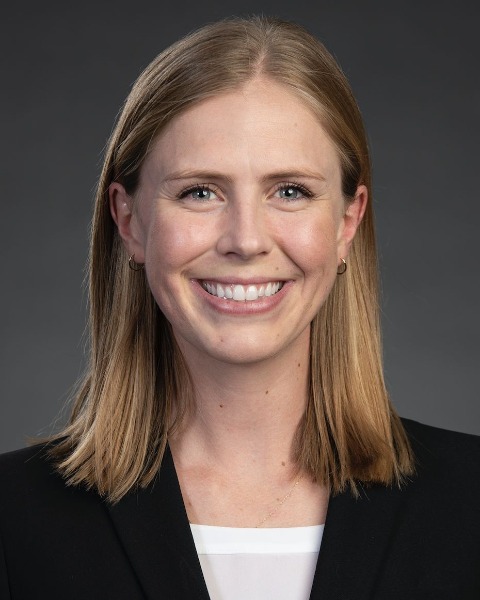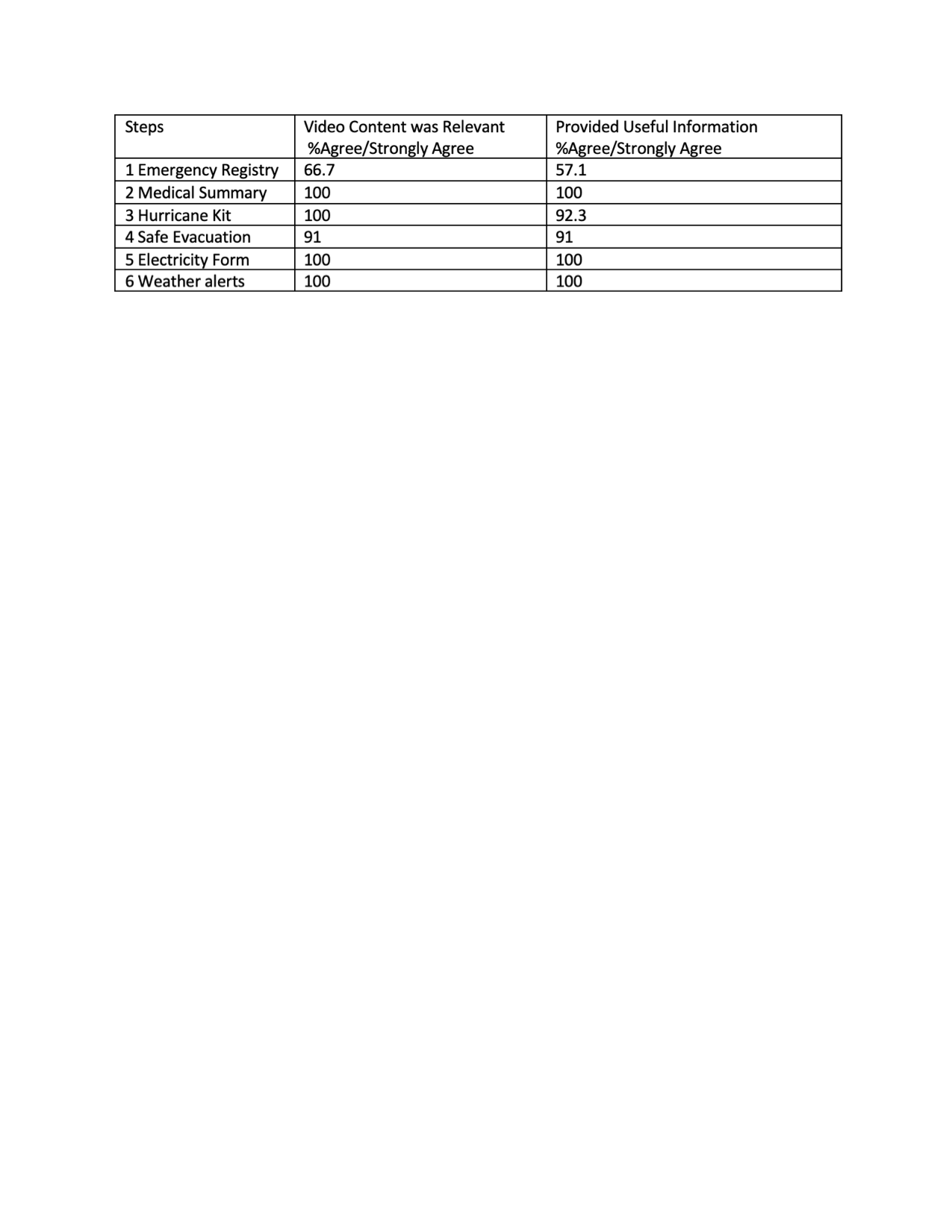Children with Chronic Conditions
Session: Children with Chronic Conditions 1
255 - Be Hurricane Ready: Developing a Wholistic Patient-Centered Approach to Hurricane Preparedness
Friday, May 3, 2024
5:15 PM - 7:15 PM ET
Poster Number: 255
Publication Number: 255.386
Publication Number: 255.386

Abigail Bourland, MD (she/her/hers)
Resident
Baylor College of Medicine
Houston, Texas, United States
Presenting Author(s)
Background: As a medical home for children and youth with special health care needs (CYHSCN), we recognize the significant risks imposed by hurricanes.
Objective: The purpose of our study is to explore caregivers’ understanding of disaster preparedness and to gain contextual insights from their experiences and challenges to develop an intervention for families living in flood prone areas.
Design/Methods: A 38-item survey developed through iterative process with key stake holders was administered to CYSHCN caregivers, defining minimal and satisfactory preparedness scores (Fig.1). Patient addresses were plotted using geospatial mapping, calculating the CDC’s social vulnerability index (SVI) scores ranging from 0-1, with higher scores indicating increased vulnerability. Chi-square test analyzed categorical data, two sample t-test analyzed group differences in continuous data. Focus groups interviews with 18 participants explored CYSHCN caregivers’ perspectives on disaster preparedness with intentional sampling of 8 Spanish-speaking families to gain in-depth understanding. Themes and subthemes derived a priori code using an interpretivist approach to thematic analysis of transcripts.
Results: We achieved a 95% survey response rate with 153 English and 63 Spanish-speaking families. Patient age ranged from 4 months to 21 years with 57% being female. 82% were technology-dependent. 78% experienced a hurricane with 56% requiring evacuation or sustaining loss. 74% reported confidence in their ability to manage their child with 41% anticipating a future disaster. Spanish-speaking families had significantly lower preparedness scores (42 vs 55, p<.003) and lower satisfactory scores (0.36 vs 0.45, p< .02) than English-speaking families. Caregivers who met satisfactory preparedness criteria reported being more confident in managing their child (0.34 vs. 0.35, p< .001). SVI scores ranged from 0.01-0.9 (median 0.6); >55% of respondents had SVI >0.56. With analysis of data from interviews, 5 major themes were identified (Fig. 2) with parents facing an incessant burden for their child’s safety with fear of losing their child being a motivating factor. Our results informed the development of step-by-step approach to hurricane preparedness enrolling 176 caregivers with desirable results (Table 1).
Conclusion(s): Our study highlights the impact of hurricanes on CYSHCN and the emotional burden imposed on caregivers. Most families are not well prepared, with Spanish-speaking families requiring targeted intervention. Families desired peer support and easy to follow instruction, informing the development of our current intervention.

.png)
.png)
